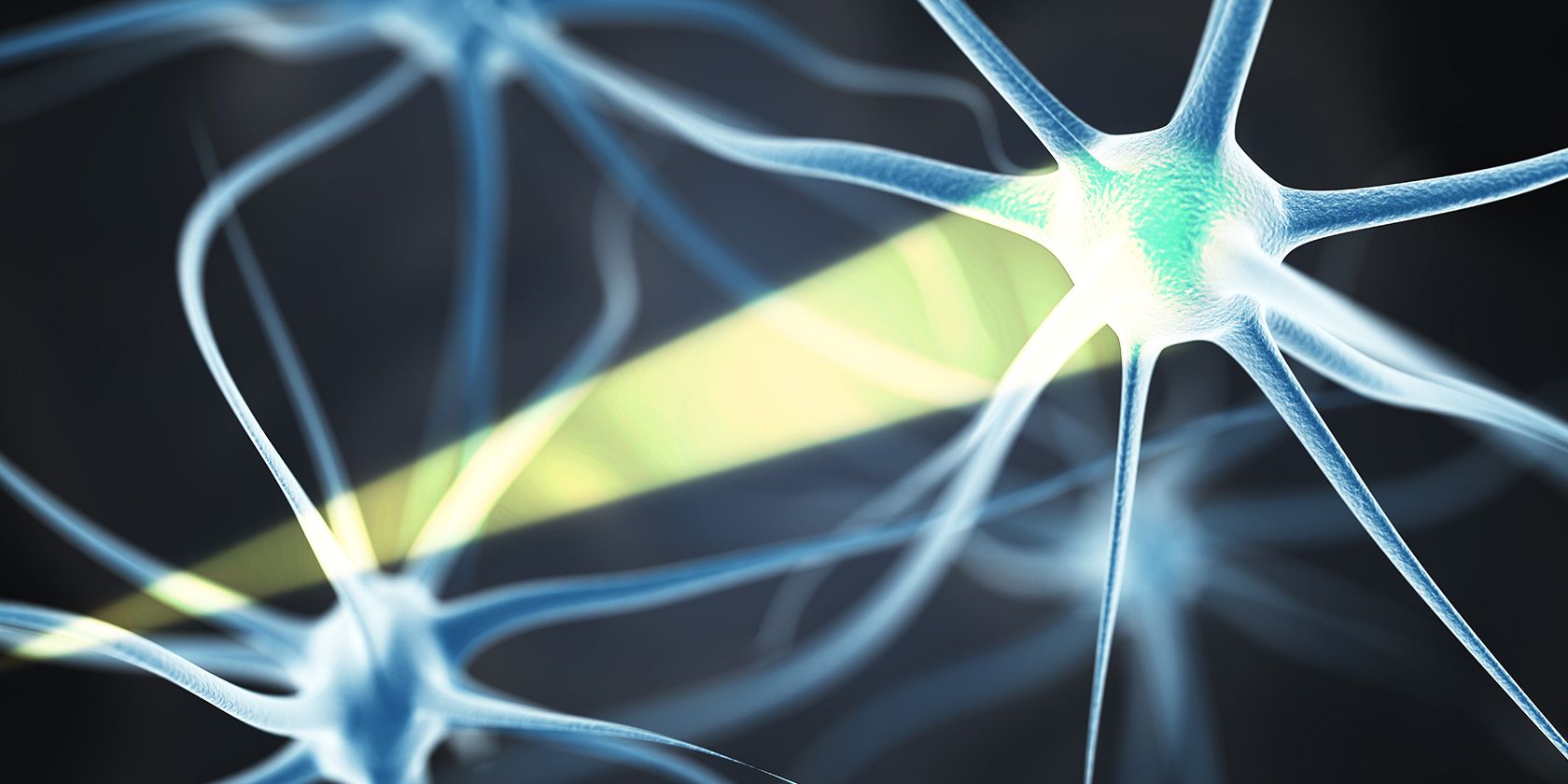Medical scientists have been studying the brain for more than five hundred years - and, after all that time, the enigmatic organ still holds plenty of secrets. Finally, over just the last few years, a new technique called "optogenetics" is emerging, which may help scientists to unravel the brain's secrets (and treat its disorders) in an entirely new way.
Why Do We Need Optogenetics?
In many ways, it's amazing that psychiatric medication works at all. The state of the art - the very best modern science can do - amounts to immersing the brain in a chemical bath, and hoping that it does the one thing we're interested in. And... it kind of works! Sometimes.
There are drugs that are very powerful for treating depression, OCD, bipolar disorder and Parkinson's disease. They're often riddled with unpleasant side effects. The medications that do work well were often discovered by nothing more than trial and error. In many cases, scientists do not have a detailed understanding of how the brain works to achieve normal function - or how it works when it is malfunctioning. These knowledge gaps are hard to address through traditional ways of studying the brain, and limit the ability to develop effective therapies.
What psychiatrists and neurologists would really like is total read-write access to the brain: the ability to reach inside someone's head and excite or suppress arbitrary groups of neurons, with single-neuron resolution, letting us isolate the populations that are dysfunctional and correct their behavior in real time. Unfortunately, cracking someone's head open and running wires to every neuron is impractical.
The promise of optogenetics is that it may actually let doctors achieve something close to that kind of access.
How Scientists Use Light to Control the Brain
Here's how it works: first, researchers inject the subject with a genetically engineered virus, designed to infect brain tissue. Hundreds of billions of copies of the virus flood the brain, injecting their payloads into nerve cells as they encounter them.
These viruses aren't harmful: instead of delivering a malicious, self-replicating payload, these viruses have been engineered by scientists to deliver a benign DNA strand that codes for special surface proteins which respond to specific wavelengths of light. The viruses simply serve as disposable syringes to deliver the special DNA to the cells.
The neurons incorporate this special DNA, and, if conditions are right, express surface proteins that cause them to fire when stimulated with light - the same kinds of proteins that are used by human retinal cells to detect light and form images. By altering the DNA to be pickier about when it expresses itself, scientists can choose which kinds of neurons (there are thousands of varieties) express the surface protein and will respond to light.
Then, by carefully controlling where light is shone on the brain, the specific locations that are stimulated or depressed can be controlled with sub-millimeter precision, a degree of control that has never previously been possible. Even better, many areas of the brain can be affected without needing to cut into or thread wires through brain matter, making the procedure much safer than conventional forms of brain stimulation.
According to Ed Boyden, a professor of bioengineering and neuroscience at MIT,
If you can control cells in the brain, you can figure out what their power is, what they can influence - and, also, if you can control cells in the brain you can fix aberrant brain states, and you can create new kinds of therapy, resculpting the computations that have gone awry in a neurological or psychiatric disorder
You can watch a fairly technical (but extremely interesting) lecture on the techniques and methodology below:
What Can You Do With Optogenetics?
Imagine that a researcher wants to better understand how depression works. So, the researcher collects some depressed mice (don't ask how researchers create depressed mice, you don't want to know), and starts testing.
They check different kinds of neurons, and different regions of the brain, and see what happens when you stimulate or depress those areas and those kinds of neurons. Some experimental groups get happier - some get more depressed: most do neither. By narrowing down which populations are related, and how they effect the outcome, the researcher slowly builds a deep, detailed functional map of the brain: isolating the machineries of joy.
This is the kind of experiment that optogenetics enables, and it stands to give scientists a deeper understanding of different mental functions and the ways that they can go wrong.
Already, optogenetics has led to some interesting potential insights into the auditory hallucinations of schizophrenia. According to Dr. Karl Deisseroth of Stanford University, it now seems likely that the voices are, in fact, normal components of the internal monologue being misinterpreted as external influence.
"It may be a poorly recognized version of internal thoughts. Somehow the information that a thought is really coming from oneself is lost. It's viewed as a foreign thing, a voice speaking. [...] [Prior to optogenetics] there was no way to know this because there was no way to selectively control [the cells] on the right timescale."
These sorts of insights are scientifically important, and could lead to better drugs and therapies, as well as answering ancient mysteries about the nature of consciousness and intelligence.
In the near future, doctors may be able to take the insights they get from these experiments, turn them around, and use optogenetics on actual patients to influence the neurological activities that are contributing to depression. Optogenetics allows doctors not just to study the brain but also to alter it with far greater precision than has previously be possible.
Building a Sanity Hat
Unfortunately, it's probably not possible to use optogenetics on humans non-invasively. The skull is simply too thick, so it's necessary to feed fiber optic cables through it. This is major surgery and has risks associated with it, above and beyond what's normally involved in beginning a course of psychiatric medication.
However, the therapies in question have the potential to be a lot more effective and have fewer side effects, so it will likely be worth it for many patients. There has already been research into using electrical brain pacemakers to treat severe depression, and the results are very promising. Future therapies based on optogenetics will likely be less invasive and more effective: once the brain is rigged with properly positioned fiber-optic cables, perhaps inserted through the nose to avoid breaching the skull, the rest of the hardware can be stored externally, for easy access. The implant itself (the fiber optic cables and laser diodes), would need only power and a control signal, things which might one day be provided wirelessly.
The rest of the hardware (the computer, battery and so forth) could potentially be worn externally, allowing the patient's doctor to reprogram it as needed, without requiring additional surgery.
Beyond correcting mental illness, optogenetics also provides a much more biocompatible and less invasive way to directly stimulate nerves cells in the brain and body than conventional implanted electrodes, which would go a long way towards making transhumanist-style performance-enhancing implants more practical.
To be clear, this is all still a long ways off: optogenetics is a widely-used research tool right now (we've covered experiments using it before). However, its role as a clinical therapy is at least a decade or two away, and may well be superseded by other techniques that can provide similar results less invasively.
Still, the prospect is exciting, and some applications may come sooner. For example, it's possible to use optogenetics to build better cochlear implants with much greater precision.
Isn't This All Really Scary?
Some of you reading this are already drawing your tinfoil hats tighter around your ears, and that's entirely fair: this kind of access to the brain is unprecedented, outside of a certain brand of hysterical science fiction. The potential for abuse is at least worth discussing.
If you can exercise enough control over the brain to fix depression and schizophrenia and personality disorders, you might also be able to exert enough control to reprogram someone's sexual orientation -- or lobotomize rowdy children and prisoners. The risks of parents trying to use such technology to force changes of identity onto their children is one that opens up entirely new ethical concerns that medicine will be dealing with for the first time ever.
Beyond that, from a simple computer security perspective, many modern medical devices are simply not secure enough and can be hacked, in some cases wirelessly. That kind of compromise is scary enough with a pacemaker, but it gets really horrifying when you consider the prospect that an attacker could (potentially) monkey around inside your head without permission.
The scientists working on these therapies are not unaware of these issues. Karl Deisseroth, in the same interview quoted above, brought up the same point:
"The specificity of optogenetics raises the question of how precisely could one tweak a brain to really create an individual with different needs, desires, priorities, feelings [...] there is a disturbing aspect, too, which raises questions of free will."
Still, these concerns pale in comparison to the enormous number of people suffering horribly from currently untreatable psychiatric diseases that optogenetics has the potential to help. This technology is more useful than it is dangerous, and, as it is developed over the next few decades, may radically change the nature of mental health therapy.
What do you think? Scary, cool, or somewhere in between? Does optogenetics have the potential to help you, personally? Let us know in the comments!
Image Credit: Neurons Via Shutterstock, "Tinfoil," by Russ Walker


